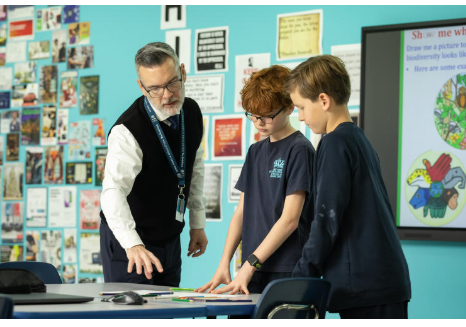Middle school is a formative stage when students begin to develop stronger identities, explore interests, and face more complex academic challenges. Personalized learning offers an effective and inclusive approach to support students during this critical phase. By aligning instruction with students’ unique needs, goals, and learning preferences, educators can foster a more engaging and empowering school experience.
Why Personalization Matters in Middle School
Students in middle school experience rapid academic, social, and emotional growth. They often seek greater autonomy while still requiring guidance and structure. Personalized learning meets these developmental needs by offering flexibility and relevance within a supportive framework. It encourages students to take responsibility for their learning while ensuring they are not left behind.
Key Benefits for Middle School Students
- Increased Engagement and Motivation
When students have a say in what and how they learn, they become more interested and invested. Personalized learning gives students choices in assignments, topics, and formats, making lessons more meaningful. - Stronger Academic Progress
Tailored instruction helps identify learning gaps early and provides targeted support. Students can work at their own pace, which reduces pressure and fosters deeper understanding. - Development of Self-Management Skills
Personalized learning encourages middle schoolers to set goals, reflect on their progress, and manage their time. These habits are essential for success in high school and beyond. - Support for Diverse Learning Styles
Whether visual, auditory, kinesthetic, or reading/writing-oriented, middle school students benefit from lessons designed with multiple pathways for engagement. - Boosted Confidence and Independence
As students see progress based on their efforts, they gain confidence in their abilities. Personalized feedback from teachers reinforces their growth and builds resilience. - Better Relationships with Teachers
In a personalized learning model, teachers act as coaches and mentors. This closer relationship fosters trust and provides students with a stronger sense of support.
Personalized Learning in Practice
In many middle schools, educators implement personalized learning through blended classrooms, choice boards, digital portfolios, and flexible grouping. Students might complete self-paced lessons online, collaborate on interest-based projects, or track their goals using learning journals.
Teachers guide this process by setting clear learning targets, offering scaffolding as needed, and regularly checking in to ensure each student stays on track.
Looking Ahead
In 2025 and beyond, personalized learning is helping middle school students build the skills and confidence they need to succeed both academically and personally. By recognizing each learner’s individuality and potential, schools create environments where students are excited to learn, willing to take ownership, and prepared for the future.
Personalized learning is not just an educational strategy—it’s a student-centered philosophy that makes middle school a more meaningful and transformative experience.














